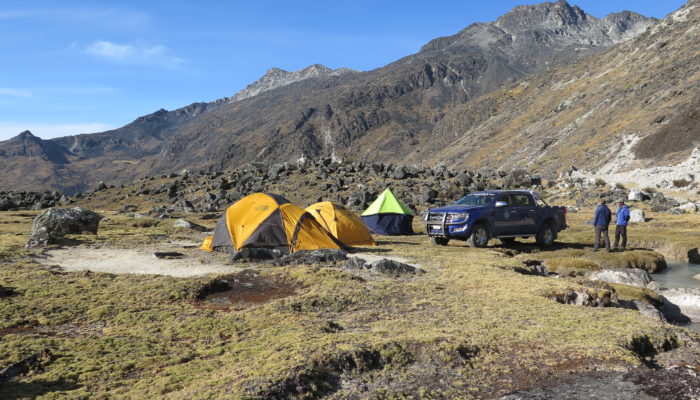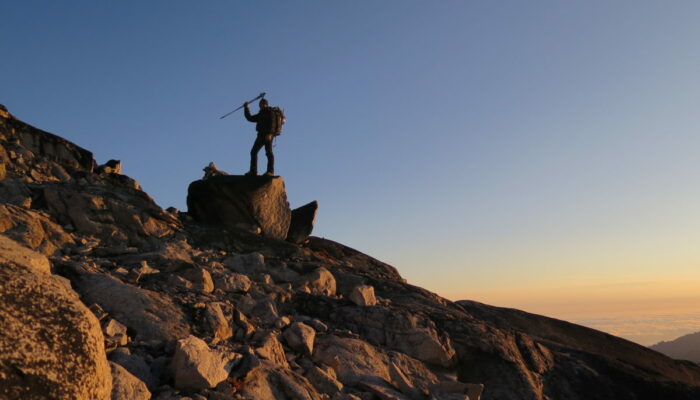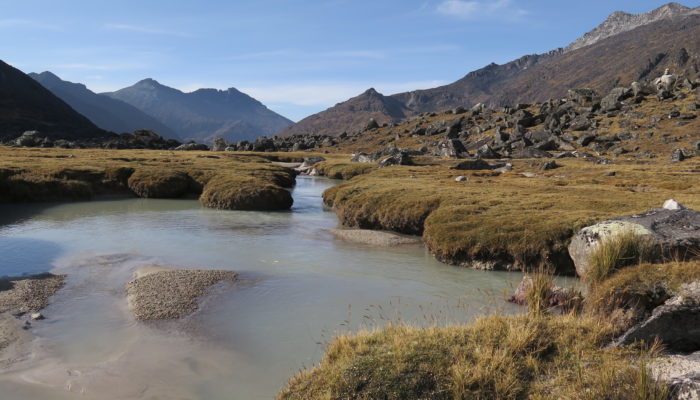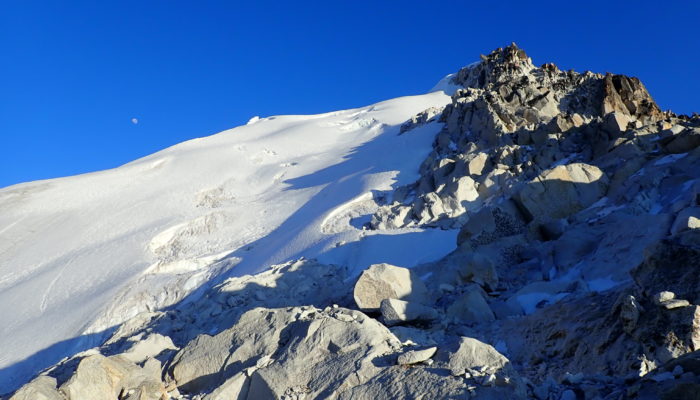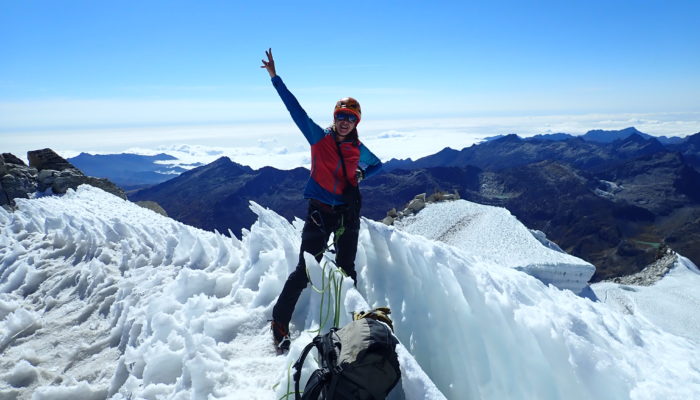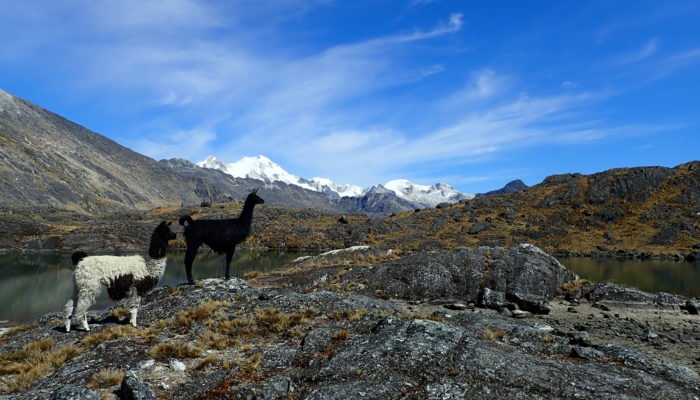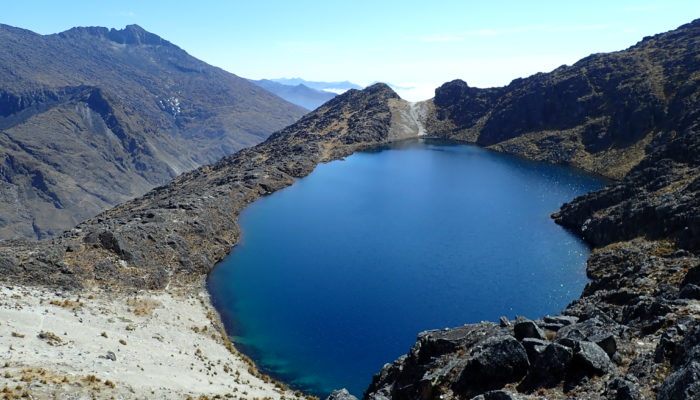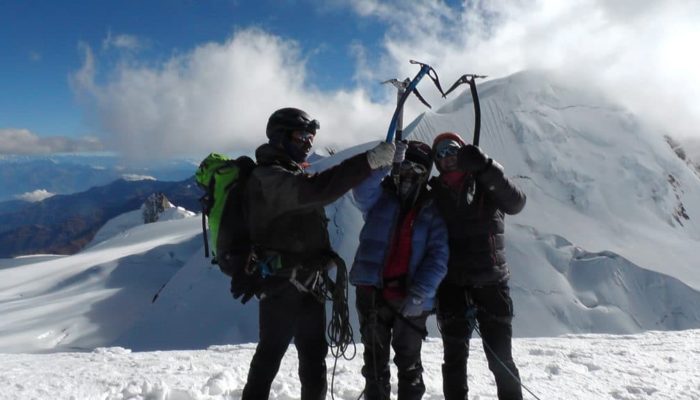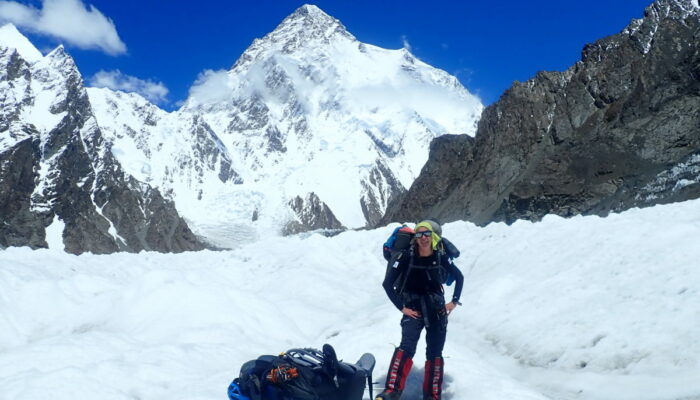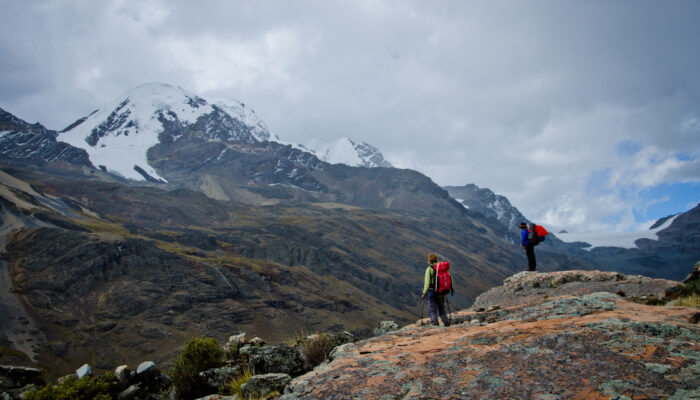On the list of things to do during this bloody sabbatical year was Janqu Laya. We had done a recce there in 2015, but it hadn’t been conclusive. The weather had been bad, and we hadn’t been able to appreciate the beauty of the scenery. We also climbed a route that was too exposed and very dangerous on the west side. We had entered a rocky chaos that was difficult to climb, except for experts in “varied terrain” …. for those in the know! The ascent was on very steep slopes in the moraine and then on the ice, and was also very exposed to rock falls. We absolutely had to go back, and this was our chance.
We took advantage of a sunny weekend in La Paz, where we were normally still cooped up (quarantine required), to escape. We were going to attempt the ascent from the south. It seemed longer. We had to make a long approach walk up the mountainside to reach the glacier, but at least the slopes weren’t too steep and the terrain seemed passable. We could make our way through the rocks. We decided to leave early, at around 03:00. In the meantime, we set up our base camp in a pretty meadow at the foot of Janqu Laya, at 4560m altitude. A beautiful turquoise stream meanders through the meadow. In places, the river offers small beaches of white sand, inviting you to take a dip in its unfortunately cold waters… but why not try a little invigorating bath?
It was time to wake up. It wasn’t too cold and there was no wind. This augured well for a fairly quiet and, above all, pleasant climb. We set off at 3.30am, more motivated than ever by a starry sky and an almost full moon. We made our way up the hillside to reach the edge of the glacier. The approach to the glacier was a long one, taking around 3.5 hours in all. The walk was fairly easy at first, the slopes were fairly gentle and we made our way through the maze of rocks. The further we progressed, the steeper the slope and the more rocks we came across. The last 150 metres of the climb were more difficult. We had to follow the cairns to find the best passage through the rocky bars. We ended the approximation more chaotically in the moraine and boulders.
We were at 5200m altitude on the edge of the glacier. The sun was now shining brightly. The ice was good, but the slopes were quite steep (45º/50º) to reach the summit ridges at around 5400m altitude. Once on the ridges, we discovered a field of penitents. We were going to have to summon all our courage to climb the last 150 metres to the summit. In some places, the penitents were very large and made the task difficult. For those who don’t know, snow penitents, sometimes called ice penitents, are snow formations at high altitudes that take the form of thin blades of hardened snow or ice, with the blades pointing in the general direction of the sun. They can reach heights of over 1 metre. It is sometimes impossible to cross them.
We reached the summit at around 10am. The sky was an intense blue and the view of the surrounding area splendid. We could see as far north as the Cordillera Real, the Illampu, the Ancohuma and, closer up, the Chachacomani. On the other side, we could see Illimani, Mururata and the west face of Huayna Potosi. The panorama was splendid. We also discovered the deep valleys that descend into the Yungas and the beautiful, colourful lakes of different blues – intense blue, emerald green and turquoise – on the sides of the mountain facing us. It made us want to go for a short hike. After a well-deserved rest at the summit, we decided to tackle the descent……the road was still long to the bottom. That day, we covered almost 10km and 1200m of ascent and descent. By the time we reached the finish, I was feeling tired and enjoyed a good siesta after a frugal meal and a nice cold beer!
The next day we decided to explore the various lakes we’d spotted the day before. Here we were, heading due north towards the lakes. We followed a pretty path that gradually climbed towards the lakes. The view gradually opened up over the eastern slopes of the Chachacomani, as well as the Très Marias massif, which is almost never seen as it is hidden on the eastern flanks of the Cordillera Real. We reached a small plateau. A group of llamas were quietly eating. A lady was watching them in silence, warming herself in the sun. Hugo broke the ice by speaking to her in Aymara. She smiled and struck up a conversation. Nobody ever came here, least of all tourists. Almost all the houses are abandoned.
The new generation left to find work in the city and fewer and fewer people lived in this valley… A little further up, we came to the first lake, unnamed after the “tia” we had met earlier. The llamas we’d seen below were coming towards us at high speed. Once there, they behaved very curiously. They approached us as if we were the wild and curious animals. It was as if they wanted to touch us, smell us, kiss us or spit in our faces. It was hard to tell. But I soon had 15 llamas around me. I started to get scared and took refuge on a boulder. Hugo wasn’t reassured either, he’d never seen llamas behave like that before…..in any case, it gave us a good laugh and some great photos.
The place was also magical, forming a kind of viewpoint, with the glacial massifs reflected in the waters of the lake. After a good laugh and leaving our camelid friends to their grazing, we continued on to the second lagoon. It was different, but also very beautiful. Nestling as it did in a crater, it was a lovely deep blue colour. Another large lagoon, also nestled in a crater, could be seen on the slopes of the neighbouring mountain. In the distance, the sea of clouds hid the deep valleys of the Yungas. It really is a wonderful walk to recommend as a way of acclimatising and getting into the swing of things. The place is beautiful, wild and different from the other side of the Cordillera. It’s possible to take a longer walk here, as there are other lagoons scattered around the area. We made our way quietly back to our camp, winking one last time at our llama friends who were always curious to see us. An excellent, fresh Corona awaited us before we packed up camp and headed back to civilisation….. and its masked human beings!

